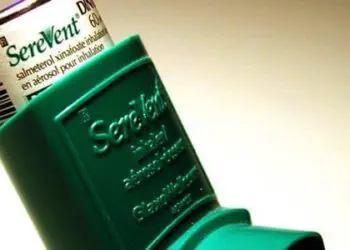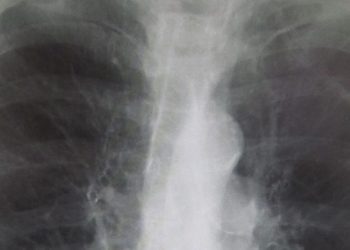Childhood asthma rates decreasing, except among the poor
1. Childhood asthma prevalence rates continued to increase from 2001 to 2009, where they peaked at 9.7%, plateaued, and then decreased to 8.3% in 2013.
2. Asthma prevalence rates in non-Hispanic black children, who experienced the greatest increase in the past 10 years, finally declined; however, the rate has continued to increase among poor children.
Evidence Rating Level: 2 (Good)
Study Rundown: A pattern once referred to as the “asthma epidemic” in the 1980s, recent data has finally demonstrated a potential leveling off of this surge. Asthma prevalence rates in children increased from 3.9% in 1980 to 9.7% in 2009. Between 2009 and 2013, asthma rates ceased to increase and, in fact, dropped to 8.3% in 2013. To better understand the prevalence of childhood asthma in different populations, researchers stratified data based on gender, age group, race/ethnic group, family structure, poverty status, urbanicity, and geographic region of residence. Racial disparities in childhood asthma prevalence did not exist prior to 1996, but widened soon-thereafter. This gap in racial disparity ceased to increase in 2009. Those that continued to experience an increase in prevalence, despite the overall decrease, were poor children, those aged 10-17 years old, and those living in the South. Researchers theorize that the plateau may be due to asthma reaching a finite capacity after exposure through lifestyle and environmental changes. Data may be limited because few years have passed since 2009 to establish a more reliable trend. In addition, survey questions for asthma have evolved from 1982 to 2009, thus the changes could be survey-related. Nonetheless, these findings should encourage pediatricians to be aware not only of the overall trends of childhood asthma, but, specifically, of the isolated increasing rates of asthma in children of poor communities.
Click to read the study, published today in Pediatrics
Relevant Reading: Center for Disease Control and Prevention. National surveillance for asthma. – United States.
In-Depth [survey]: Childhood asthma prevalence rates were calculated from 1982 until 2013 (based on a single question survey from 1982 to 1996 and a 2-question survey from 2001 to 2013). Data was not available between 1997 and 2000 due to the change in the national survey methodology. Between 1982 and 1996, childhood asthma prevalence increased from 3.9% to 6.3% (p < 0.05). Subsequently, for children between the ages of 0 and 17, asthma prevalence increased from 8.7% in 2001 to 9.7% in 2009, leveled off, and then decreased in 2013 to 8.3% (SE: 0.03%, p < 0.05). Significant interactions were found for age group, poverty status*, race/ethnicity, and geographic region, while gender, family structure and urbanicity were not significant. Specifically, prevalence rates consistently increased for children aged 10 to 17 years old, poor children and those living in the south. In contrast, rates increased, then plateaued in children aged 5 to 9 years old, near-poor children, and non-Hispanic black children. Finally, rates increased and declined in children aged 0 to 4 years old, non-poor children, Mexican children, and those residing in the Midwest.
*”poor” = ratio of family income to the federal poverty level [FPL]: family income <100% of the FPL; “near poor” = 100% to <200% of the FPL; “non-poor” = ≥200% of the FPL
Image: CC
©2015 2 Minute Medicine, Inc. All rights reserved. No works may be reproduced without expressed written consent from 2 Minute Medicine, Inc. Inquire about licensing here. No article should be construed as medical advice and is not intended as such by the authors or by 2 Minute Medicine, Inc.







